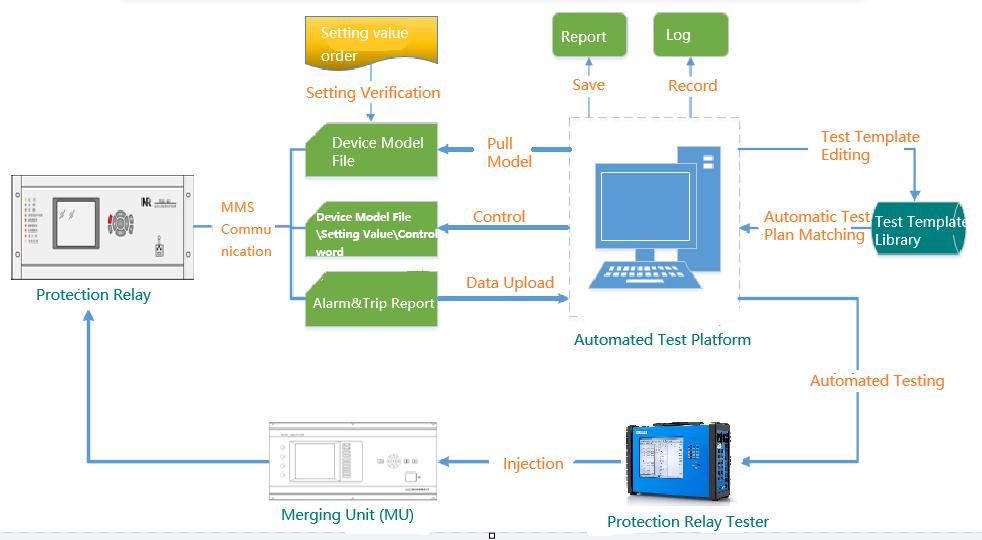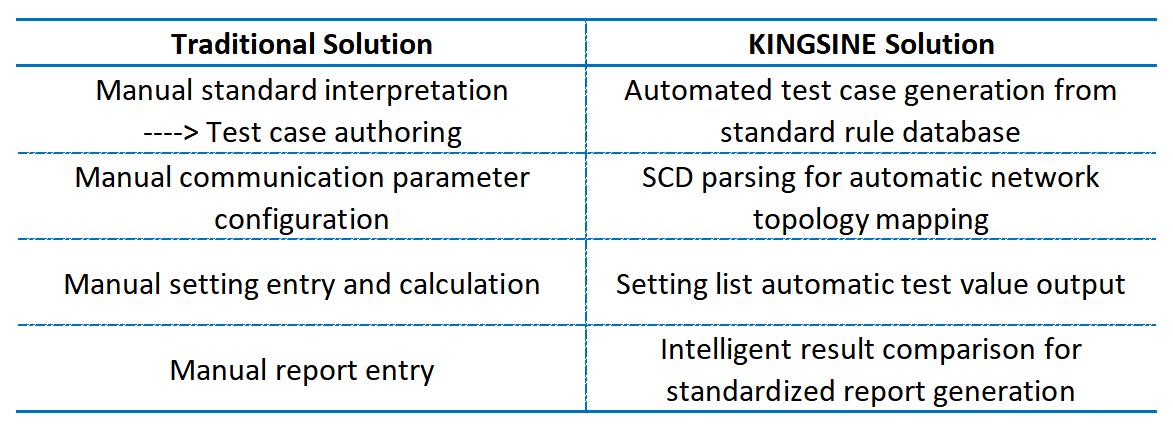
As shown in the figure, in the automated testing process, the precise selection or design of highly compatible scheme templates based on test content, along with effective execution of these templates, constitutes a critical link in the automated protection relay testing equipment. This step is of paramount importance for ensuring the correct implementation of core functions in protection relay devices, the reliable execution of logic judgment processes, and the accurate triggering of setting-based operations.
To achieve this objective, KINGSINE has established a structured rule library based on authoritative standard documents and specifications, which is then used to generate unit test cases as following rules.
Extracting Standard Rules: Systematically extract core protection relay-related rules and requirements from authoritative sources such as the IEC 61850 standard, and protection equipment technical manuals. This includes:
Protection operating principles
Logic judgment conditions
Setting value configuration rules
Functional definitions of connection plates (control bits)
Automated Test Wizard Interface
In the automated test wizard interface, users can configure key test scenario parameters—including substation type, voltage level, protection relay type, and manufacturer—and select the test category (custom test, individual relay test, or complete protection scheme test).
The system will intelligently match the corresponding .xml test template based on the user's configuration. Additionally, users must import the substation configuration description (SCD) file. The system then parses the SCD model to extract substation topology and configuration details, automatically generating and configuring the required test cases for verification.
Device Selection Interface
In this interface, the automated test software analyzes the user-uploaded SCD file and dynamically generates a visual substation topology diagram along with an IED control block list.
In the IED information section, users can select the target device instance for testing (based on IED configuration descriptions in the SCD file), and directly modify communication parameters (e.g., IP address) of the selected IED. This ensures subsequent test functions - including setting read/write and remote control operations - can be properly executed via MMS protocol.
Station Control Level Configuration
In this interface, users can read real-time parameters from the device under test via MMS protocol (over TCP/IP network), including protection settings, control bit status, and device version information. The system also supports offline import of standardized protection setting sheets (.xml or .pdf format) for comparison with actual device settings or pre-configuration of test templates.
Process Level Configuration
Based on the IEC 61850-9-2 standard, users can configure GOOSE/SV communication models. The subscriber side can map protection tripping, blocking and other signals to the tester's input channels. The publisher side can simulate merging unit (MU) or intelligent electronic device (IED) outputs including sampled values (SV) and trip commands (GOOSE).
Upon completion of configuration, the system automatically executes the test sequence
Test Result Processing

Parameter Calculation: 1. Parse the matched .xml test template; 2.Extract equipment setting parameters from the protection setting sheet; 3.Dynamically generate output values for test channels (such as current/voltage magnitude and phase)
Result Processing: 1.Automatically compare measured data with template expected values; 2.Generate structured test reports (including pass/fail indicators)

Trinity Technology Stack: Standard Rule Base Engine + SCD Intelligent Parsing Core + Setting-Test Value Conversion Algorithm
Applicable Scenarios: New substation commissioning, protection device grid-connection testing, routine maintenance testing, logic modification verification